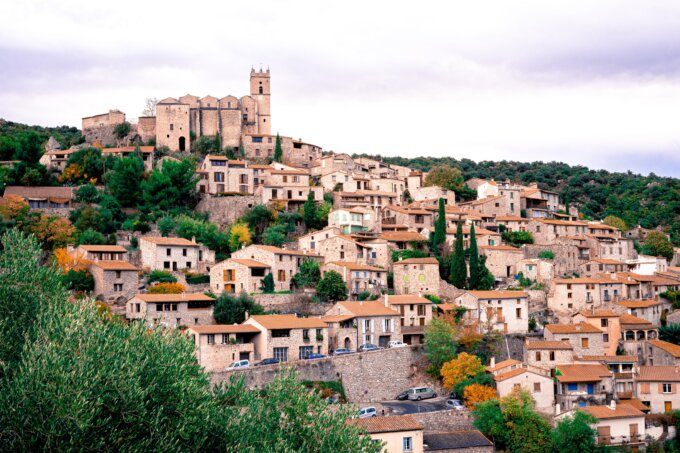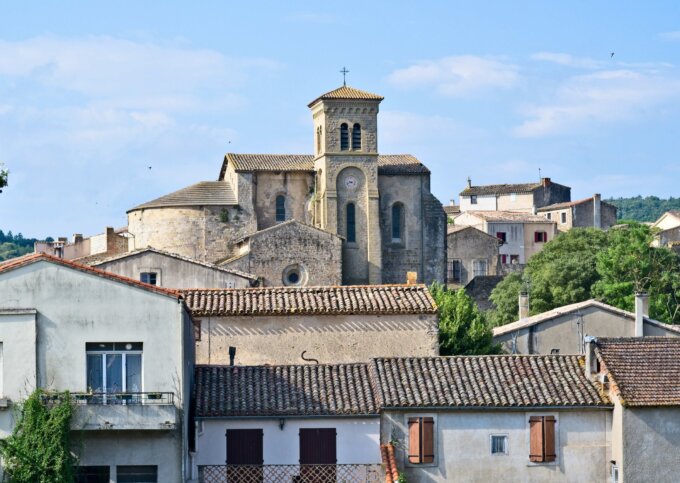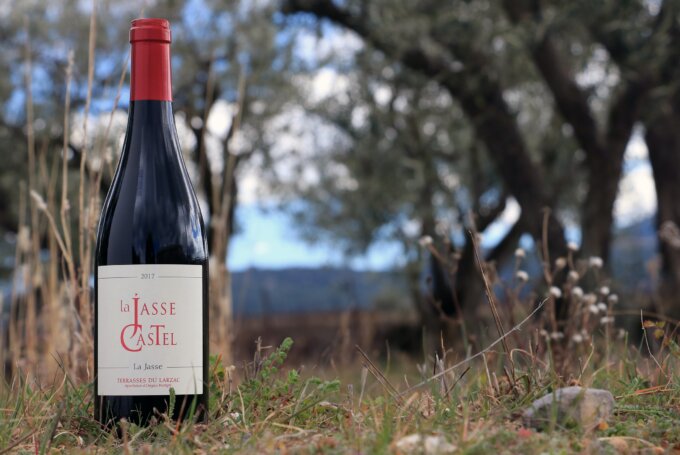Be social! Share the fun!
Your Guide to Languedoc, France

Guide to Languedoc, France
Have you seen the film, A Good Year with the award-winning actor Russell Crowe? Or have you read the book, A Year In Provence by author Peter Mayle?
Provence in the Languedoc

That Provence-centered book sold well over six million copies–a magical sum. Why? One explanation is because it offered the promise of “the good life.”
A life filled with delectable farm-fresh cuisine paired with delicious wine. Then enjoying it all among family and friends beneath the sunny blue skies of the French countryside.
Wine Guide to Languedoc, France
Yet if you haven’t seen this film, or read the book, chances are you have not heard of the Languedoc region in Southern France. But if you’ve ever enjoyed a glass of the dry, pale pink rose wine of Provence, you can well imagine its pleasures.

For this wine guide to the Languedoc, France I “mind mapped” an assortment of visual images and sensory vibrations of how to explain the Languedoc.
Visually, to me it’s all wide blue skies and bright sunshine. The air constantly renews itself with the scent of green trees, garrigue (herbs including rosemary and lavender) carried by its often assertive wind.
While one may not “smell” the diverse soils of the Languedoc, keen eyes will notice that depending upon the specific region, some grapes grow on vineyards characterized by stony, rocky soil while others on rich black dirt.
History of the Languedoc, France
You might have heard the expression “all roads lead to Rome.” Historians say this because over two thousand years ago, Rome was the center of Europe.
The first thing wine-loving soldiers did upon entering (more likely, conquering) new territory was to plant a vineyard.
That said, vineyards were not “new” in the Languedoc. The ancient Greeks had been the first to introduce vines to the area in the 5th Century BC. If you visit modern-day Marseilles, you will see thousands of wine amphoras (the clay vessel used to both age and transport wine) in the local museums.
On account of the vibrant sunshine, fresh winds (necessary for healthy vines), and superior vineyard soils, the Languedoc earned fame early on for its excellent wine.
Many people credit Dom Perignon for inventing the sparkling wine of Champagne. Yet scholars disagree, pointing out that in the year 1531, religious monks at the Abbaye de St-Hilaire produced a sparkling wine in the Languedoc appellation of Limoux.
The Canal Du Midi - Guide to Languedoc, France

Question: Imagine yourself in the Languedoc somewhere in the 17th century. You are what can be referred to as “a person of property.”
Meaning that you own farmland and plots suitable for grapevine growing.
Likely, you and your neighbors would want to open distribution channels for the wine you make.
This is why the Canal du Midi was constructed. It connects the Mediterranean to the Atlantic, easing transportation.
Then, a few hundred years later in the 19th century, the new railroad made it easier to ship wine to Northern France.
A good thing, yes?
Yes. But in 1868, phylloxera attacked grapes. This caused vines to be grafted onto phylloxera-resistant rootstock.
Major replanting became a trend, with the mission to increase quantity and high yields.
Then the Languedoc wine industry suffered a setback. By 1900, overproduction resulted in plummeting prices, wine fraud, and inappropriate chaptalization practices. Note: Chaptalization can be described as the process of adding sugar (or beets) to increase alcoholic strength.
It wasn’t until 1975 that Languedoc producers shifted their focus to raise the level of wine quality.
Languedoc Key Grape Varieties

You might suspect that many of the grape varieties in the Languedoc are the same as in the southern and northern Rhone Valley.
The Languedoc’s AOC wines are mostly blends made from Grenache, Syrah, Carignan, Mourvedre, and Cinsault for the reds.
Sommeliers like to call a Grenache/Syrah/Mourvedre blend a “GSM” as a nickname. This is a very common blend of the southern Rhone Valley, but in the Languedoc you will also detect an herbal note called “garrigue.”
This translates to a bouquet of herbs including thyme, rosemary, and others. Red wines make up at least sixty percent of the Languedoc’s total production.
Rose wine represents 19 percent and growing even as you read this. You will also find sparkling wine (mostly in the Limoux AOC) and a small percentage of Muscat-based (sweet) vins doux naturels.
Trends in the Languedoc Today
On my very recent visit, I saw new wine industry investments in multi-million dollar wineries, as well as new higher standards in the traditional cooperatives. Note that cooperatives are grape growers who bring their grapes via truck (or horse) to a central wine processing / maturation center.
Many call it a “new frontier” for wine.
The Languedoc region offers a diverse range of wine styles and also exceptional quality at approachable prices.
Final Thoughts on the Languedoc
If you have not yet experienced a Languedoc wine, this is the best time to ask the wine seller in your neighborhood to show you some examples. In most cases, they will be under $20. And always delicious.
And if you haven’t yet visited the Languedoc, this is the time! The weather is gorgeous all year with 300 days of sunshine.
Here is a link to the George Bertrand resort, winery, and wine information center I wrote about in Forbes.